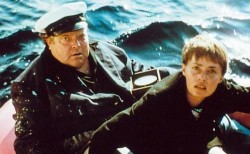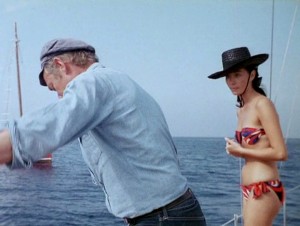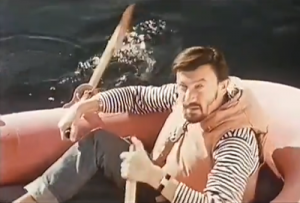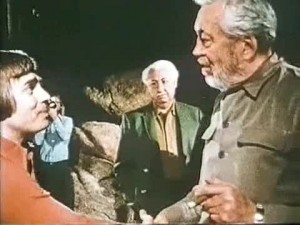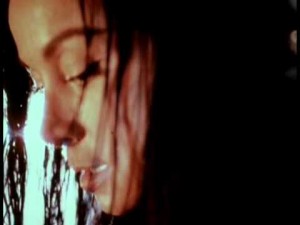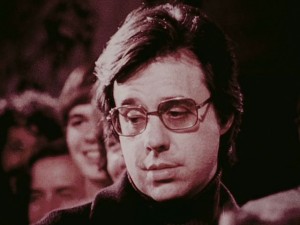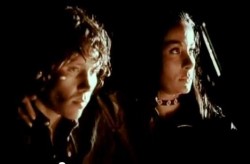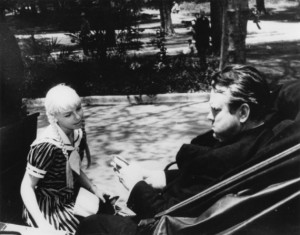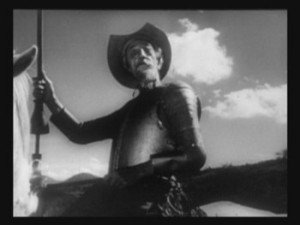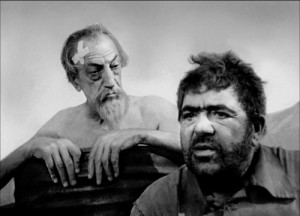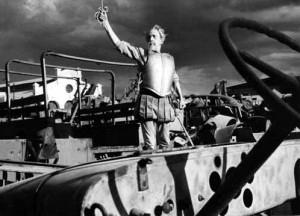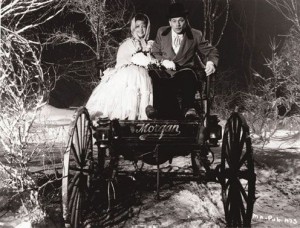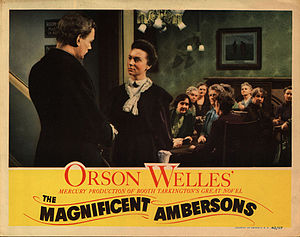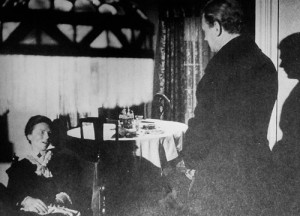The following notes appeared in the same issue of Film Comment (November–December 1972) as “The Voice and the Eye,” at the end of my regular column, titled “Paris Journal,” which typically dealt with several different topics. Though these notes largely replicate things said elsewhere by Welles, two details for me stand out as significant additions to the record: that Welles regarded his Don Quixote as nearly completed in 1972 -— which corresponds fairly closely to the conclusions of “Don Quixote: Orson Welles’s Secret” by Audrey Stainton (who worked “on and off” as Welles’s secretary in the late 1950s) in the Autumn 1988 Sight and Sound — and that he remained convinced that the deleted footage of Ambersons was destroyed by RKO (a belief I regretfully share, though legends continue to circulate about another copy of the longer cut that may survive somewhere in Brazil).
2014 footnote: The information that The Deep was “completed” by 1972 seems contradicted by the apparent fact that Jeanne Moreau never dubbed her part. -– J.R.
In the course of a conversation with Orson Welles about his Heart of Darkness script, which is detailed elsewhere in this issue, I asked Welles about his more recent projects. Since a great deal of speculation has been circulating about these projects, the following details may be of some interest:
The Deep -— which was shot in Yugoslavia, 1967–69, in Eastman Color, starring Welles, Jeanne Moreau, and Laurence Harvey -— is completed, but Welles prefers to hold it back for the time being, waiting until he has released something else first. He describes it as a “melodrama,” adding that “it won’t date.”
The Other Side of the Wind is not yet finished, but Welles indicates that he would like to release it before any of his other new films, because “movies are a popular subject now” -— the story concerns a film director —- and he has some doubts about how long this interest will last.
Welles’s Don Quixote film, which he began shooting in 1955, is now virtually complete, except for some music and additional sound that is still to be added. Welles noted with a grin that the film now has a new title, When Will Don Quixote be Finished? (or something to that effect; I quote from memory), and described a previously announced title, Don Quixote Goes to the Moon, as a “put-on.” Joseph McBride has suggested that one of the reasons why Welles has taken so long with the film is that he was unable to think of an ending: “how can the modern world, in which the film is set, tolerate Quixote’s existence…but how too could Quixote ever cease to exist?” In this respect, the new title seems ideal. Welles is still undecided about whether to release the film fairly soon, in “competition” with the two other Quixote films that are currently being prepared by others, or to wait still longer.
Still another project that remains close to Welles is shooting a new ending of The Magnificent Ambersons “with the surviving actors, showing the characters ten years later,” replacing the unspeakable final scene as it now exists (directed, according to Peter Bogdanovich, by Freddie Fleck), and releasing this version as a new film. According to McBride, the original deleted footage of Ambersons “reportedly exists in the Paramount Studios film library (which acquired RKO’s films in 1958), but a scholar would have to dig through literally millions of feet to find it.” When I cited this quote to Welles, he remained unconvinced. “No,” he said, “I’m sure they burned it all.”

